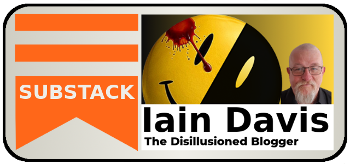In Part 1 we introduced the difference between micro and macro economics and in Part 2 we considered that in more detail. Now in Part 3 we look at further detail and start to consider some potential problems.
Macroeconomics: Macroeconomics is the study of the whole economy and the forces that can effect it. To say it’s a complicated subject would be an understatement. Just consider for a moment the number of factors that can influence a whole economy. Wars, strikes, mass unemployment, natural disasters, political change, cultural and social change, technology etc. . . etc. . . etc.
Whilst macroeconomics isn’t concerned with the study of these events it does consider any and all influences on the economy through the process of macroeconomic analysis. It tries to predict inflation so that consumers can budget (a micro-economic factor,) anticipate market supply and demand (so that businesses can plan) and informs government economic policy. There is an almost limitless set of interdependent factors that contribute to macroeconomic analysis but it predominately focuses upon three main economic indicators.

Gross Domestic Product GDP: The GDP of a country refers to the total value of all the goods and services it produces. By calculating the GDP at a certain moment the relative health of the economy can be estimated. Within macroeconomics this is often called ‘real GDP’ because it also takes inflation (see below) into account. The alternative is called the ‘nominal GDP’ figure. As prices rise with inflation the nominal GDP also rises because it is more closely linked to the price of goods. However macroeconomics uses ‘real GDP’ because this is adjusted to reflect the impact of inflation. Therefor, by comparing ‘real GDP’ figures you can better estimate the actual productivity of an economy.
Having a comparative analysis of GDP, which is adjusted for inflation, is important because it enables economists to see how productivity rises and falls over time. When GDP decreases the economy can be said to ‘contract.’ Often these periods may coincide with recession or perhaps a brief down turn in the ‘business cycle.’ Similarly increased GDP may coincide with ‘strong economic growth.’
The problem with the GDP, because it relies upon collected statistics, is that it can only show economists what has happened in the past. However by cross referencing the periodical shifts in GDP with known events, such as policy changes or credit slumps, macroeconomics allows economists to forecast what will happen in the future with some degree of accuracy. However this is never entirely accurate as economists cannot predict world events any more than you or I.
Unemployment: Just as macroeconomics uses ‘real GDP’ analysis to predict future economic conditions it also focuses upon unemployment as a ‘litmus test’ for economic activity. Unemployment figures record the number of people of working age who are unable to find work. This is of particular interest to economists because unemployment reacts to changing economic conditions relatively quickly and is comparatively easy to measure. Therefore increasing unemployment is often a precursor to reduced GDP. Similarly reducing unemployment may indicate, for example, that the economy is moving out of recession into a period of recovery. Unemployment figures are like the early warning system for economic change.
Inflation: Inflation refers to the percentage increase of the price of goods. The two ways that it is measured is either through the Consumer Prices Index – CPI (a comparison of the rise in prices of certain goods from year to year) or via the ‘GDP deflator’ (which is the relation between nominal and real GDP.) Macroeconomics concerns itself with inflation because it dictates the future prices of goods and services which, in turn, effects demand, productivity and eventually GDP.
Macroeconomics is almost the study of the interconnection of all things.
Conclusion: Micro-economics and macroeconomics are really two separate perspectives on a single economy. By looking at the decision making processes of individual consumers and the businesses that supply to them, micro-economics can be seen as a bottom-up analysis of the economy. Conversely macroeconomics, which looks at the effect of large scale forces on the economy, is often seen as top-down analysis.
Because both micro and macro economics are concerned with the supply and demand, the activity of the consumer is integral to both. The fundamental idea is that demand is driven by both the consumers need for goods and services (bottom-up) and the government spending on public services, state employment etc (top-down.) However consumer demand is also reliant upon the amount of money that the individual has to spend in the economy after tax. This amount is called consumer ‘disposable income.’ Therefore average salary is also deemed to be an important factor which determines economic demand.
Demand is considered to be vital because, at a basic micro-economic level, businesses try to meet supply to demand and supply is another way of saying ‘productivity.’
However there is a serious problem with this way of understanding an economic system. We will look at that in Part 4.





Be the first to comment on "Difference Between Micro And Macro Economics – Part 3"